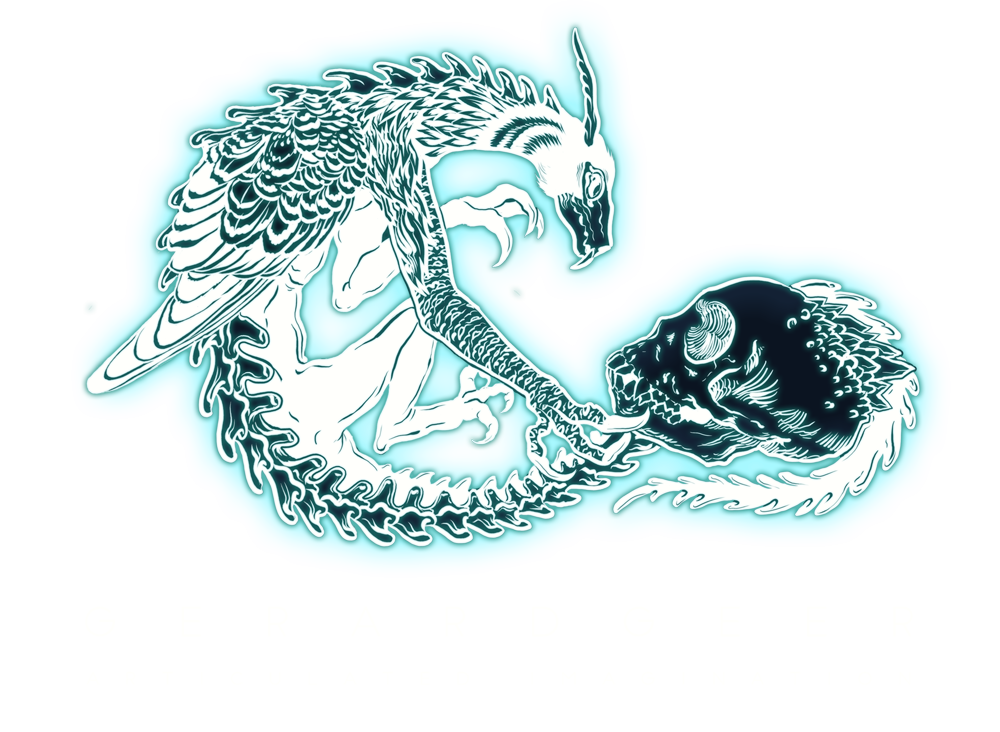-
Diaphonisation (or diaphonization/clearing and staining) is a century old histological technique used to study skeletal anatomy. Predating the existence of X-ray technology, diaphonisation allows for the detailed examination of skeletal development in organisms ranging from foetal or embryonic to adult specimens. It involves the utilisation of a combination of biological and chemical processes to render tissues transparent, and selectively staining tissues for differentiation (such as calcified bone and cartilaginous tissues). This technique is incredibly useful for morphological study in biology, and also provides an aesthetically beautiful window into the inner workings of the creatures we share the planet with.
Diaphonised specimens should last a century or more if looked after carefully! The main threat to the quality of the specimens over time are: physical damage in the short term; and ultra violet light over the long term. To best take care of a diaphonised specimen, keep it out of long term exposure to direct sunlight, and out of reach of children and animals. Most of the repair work I do with preserved specimens is fixing up damage from a cat pushing it off of a table, or a small child accidentally breaking it!
In case of a broken jar or vial, the best thing to do is to quickly rinse any dust or dirt from the specimen under water, then place the specimen in a ziplock bag. This will stop it from dehydrating. The fluid is vegetable glycerine with thymol extract as a preservative, the former can be replaced easily as it can be found in most supermarkets. The thymol is less accessible, but also not entirely necessary to replace as the specimen itself will contain some of the thymol in the tissue.
While both the fluid and the preservative are non-toxic, it is not recommended for consumption. However if a child or an animal does consume spilled fluid, the broken glass would pose a higher threat to health than the solution. here
-
The chemical solutions that I use in crystallising skulls and specimens are carefully chosen to be as stable as possible, and the crystals themselves have been coated and sealed for protection. To best take care of a crystallised specimen, it should be kept out of direct sunlight and out of the direct path of a heater or air conditioner. Direct sunlight can slowly break down the chemical structure of the crystals, as well as heating them up. Exposure to air flow (particularly heated or cooled air) can cause the crystals to become dehydrated over time, and they may begin to take on a dull or white colour. In the worst case scenario, they may begin to break and crumble into a fine powder.
Ideally, they should be kept in a display case or under a glass dome to protect them from dust, and from rapid changes of temperature or humidity. The crystals are somewhat fragile, and so being handled constantly does pose a threat to breakage and damage. So it is best to find a more permanent location for its display, and to move it as infrequently as possible. -
The fluid preserved specimens that I prepare have been made to become as permanent as possible, however there are still some factors to consider in order to keep a specimen looking beautiful forever. Ultra violet light can bleach out specimens over time, and remove the colour in fur, feathers and organs, and so long term exposure to direct sunlight should be avoided where possible.
I use a preservative fluid for my preservation work that is glycerine based, as opposed to the more common alcohol based fluids. I use this solution as I find it has greater clarity, and won’t pull oils and fats into the solution like alcohol will. This means that generally the solution will remain more clear for much longer, while also posing less of a potential hazard in case of spills or breakage.
While this is my personal preference, the solution used can readily be replaced with 70% ethanol solution if that is preferred or required.
-
The main concern for damage to skulls and skeletons long term is dust. Dust can build up on the bone, and become hard to remove due to the natural porosity of the bones surface. To avoid this, it is best to keep skulls and skeletons enclosed in glass to protect them from dust. Most display cases will do a great job with this, as will glass domes and display cases.
Some people coat skulls and skeletons with a thin layer of clear coat sealant to create a barrier to dust, however I personally don’t like to do this as it tends to make the skulls look slightly glossy.
Regarding articulated skeletons, mine are prepared using a combination of wires for support and strengthening, and cyanoacrylate glues for connecting and reinforcing. Cyanoacrylates are incredibly strong, and last a very long time, but as with everything else ultra violet light can slowly break the glues down over time. For this reason I would always recommend keeping any precious specimens away from exposure to prolonged direct sunlight.
Street Address
City, State, Zip
+61 403 828 826
